
AI in Grantmaking: Early Lessons from the Hilton Foundation
The world of philanthropy can be vast and complex, especially spanning numerous initiatives around the globe and with dozens of partners operating in multiple languages. Established in 1944, The Conrad N. Hilton Foundation has awarded more than $3.6 billion in grants, and paid out nearly $300 million in grants in 2024 alone.
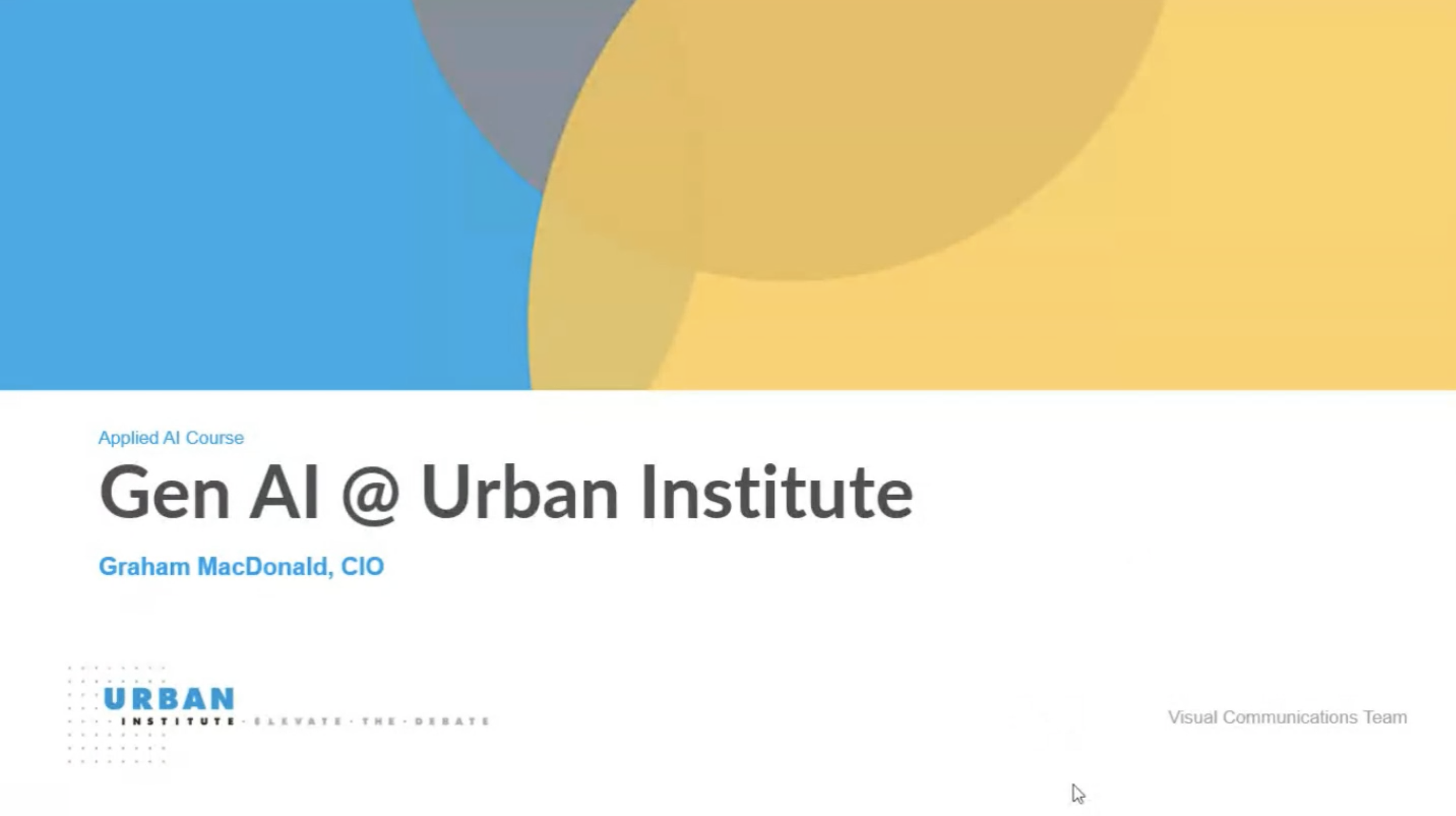
Insights on Responsible AI Adoption from the Urban Institute
How can trust-based research organizations balance innovation and risk mitigation?
In the June 2025 Applied AI (XD131) course, Graham MacDonald, the Chief Information Officer (CIO) of the Urban Institute shared practical insights in developing the first AI policy at the Urban Institute while navigating the rapidly evolving generative AI (gen AI) landscape.
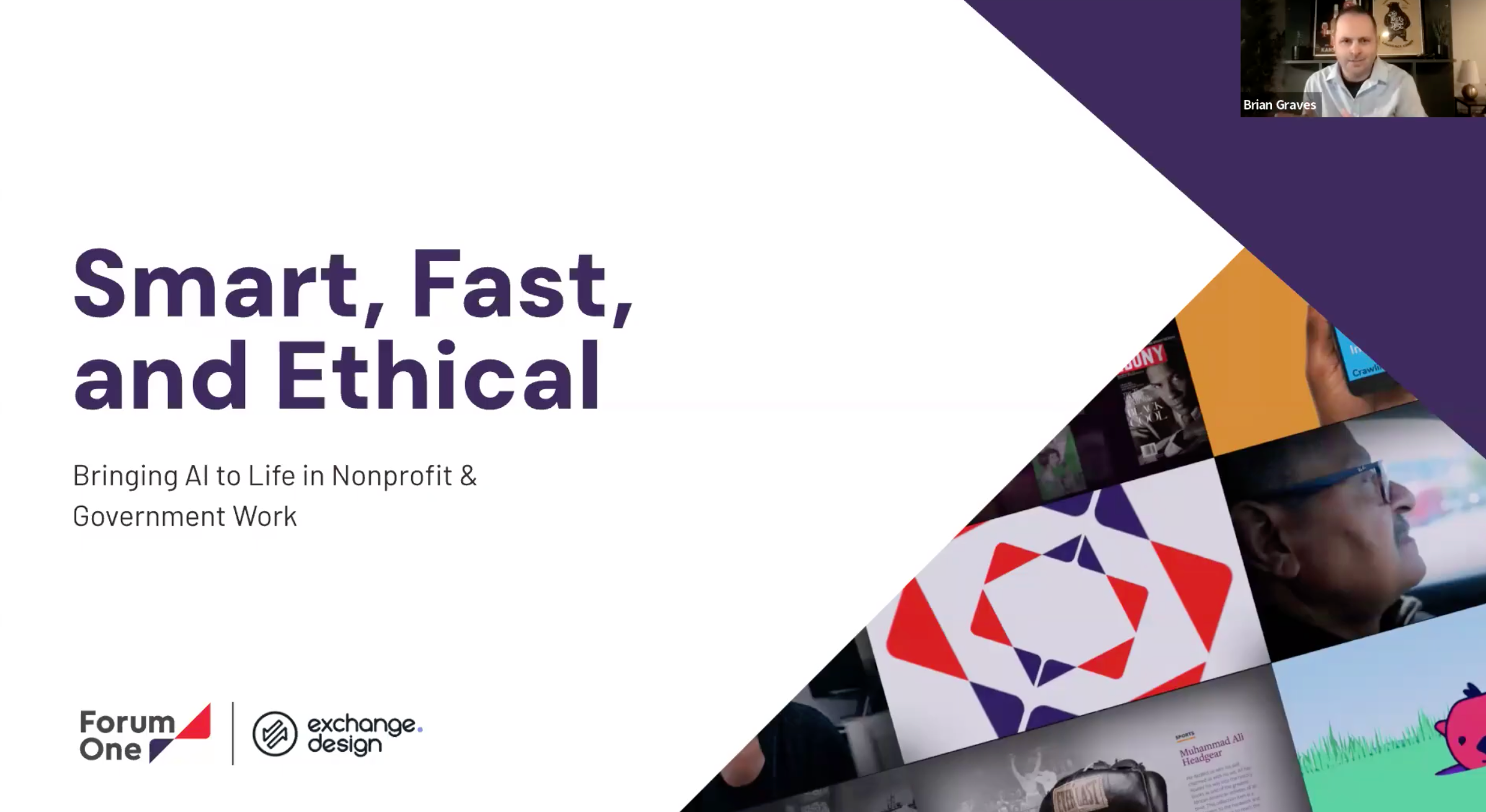
How to Enable Smart, Fast, and Ethical AI for Nonprofits and Government Agencies
In May 2025, Exchange Design partnered with Forum One to host a webinar on Smart, Fast and Ethical: Bringing AI to Life in Nonprofit and Government Work. This first webinar in our series on Artificial Intelligence (AI) for mission-driven organizations explored the unique funding, technology, and opportunity landscape of rapidly changing technology.

Revolutionizing Work and Job Search: A Power User’s Playbook for AI at Work
Can being at the "leading edge" of technology adoption maximize your workplace productivity as well as potential career prospects?
During a guest expert session in the June 2025 Applied AI (XD131) with Wayan Vota, the founder of Career Pivot, shared his practical approach to integrating AI tools into daily workflows and job search strategies.
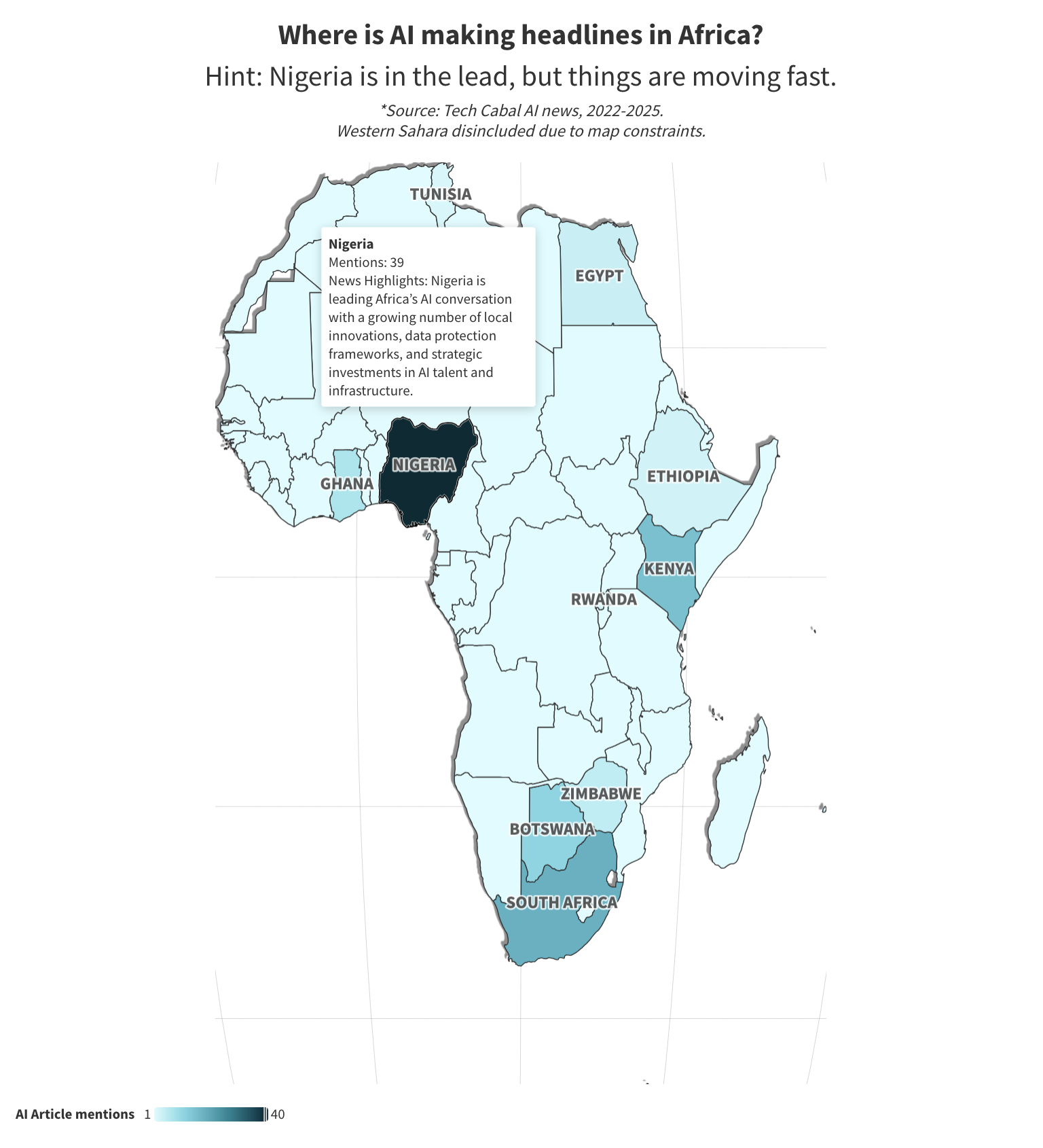
Building a Low-Cost, Low-Code AI News Tracker for Africa’s Emerging Tech Landscape
For Jordan Levinson’s final project in Applied AI (XD131), she set out to track and analyze AI-related news coverage in Africa — building an automated, AI-driven workflow to visualize the pace and distribution of AI’s growth across the continent.

Using AI Tools to Scrape, Categorize, and Communicate Cutting Edge Research on Women’s Empowerment
In the June cohort of the XD131 Applied AI course, participants were asked to choose a final project that would draw from guest experts, featured tools, and practical work sessions to apply AI in a novel way to a personal interest. This post features a brief Q&A with Sabreen Alikhan and then the final project produced for the course.
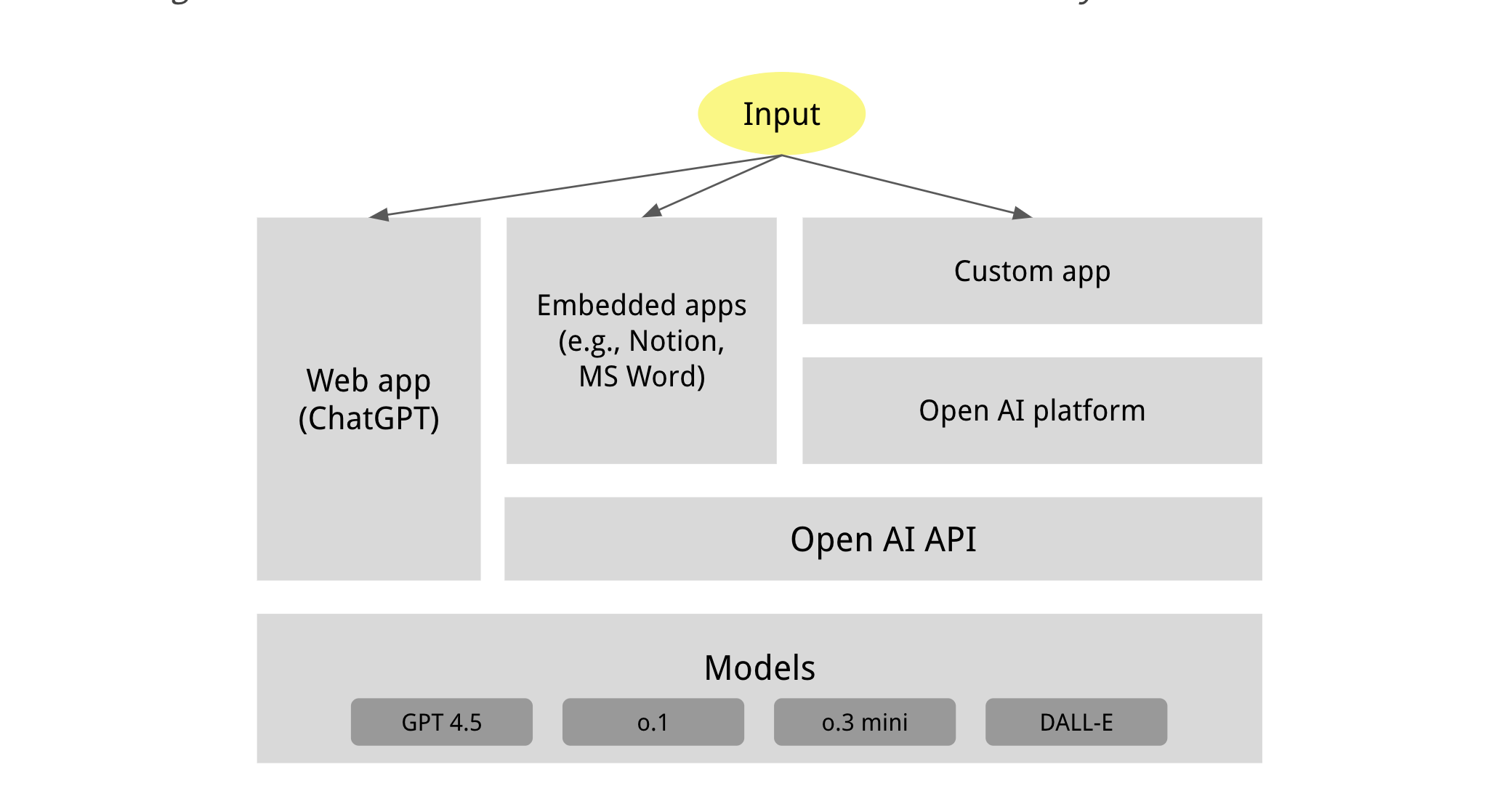
Unlocking the Power of Generative AI: From Core Concepts to Real-World Applications
Generative AI has rapidly captured global interest, but what exactly is it, and how is it transforming the way we work and interact with technology?
The introductory session of our June 2025 Applied AI (XD131) course led by Bryan Pon and Greg Maly of Exchange Design provided a foundational understanding of this rapidly evolving field and introduced key challenges to be explored further in the course.
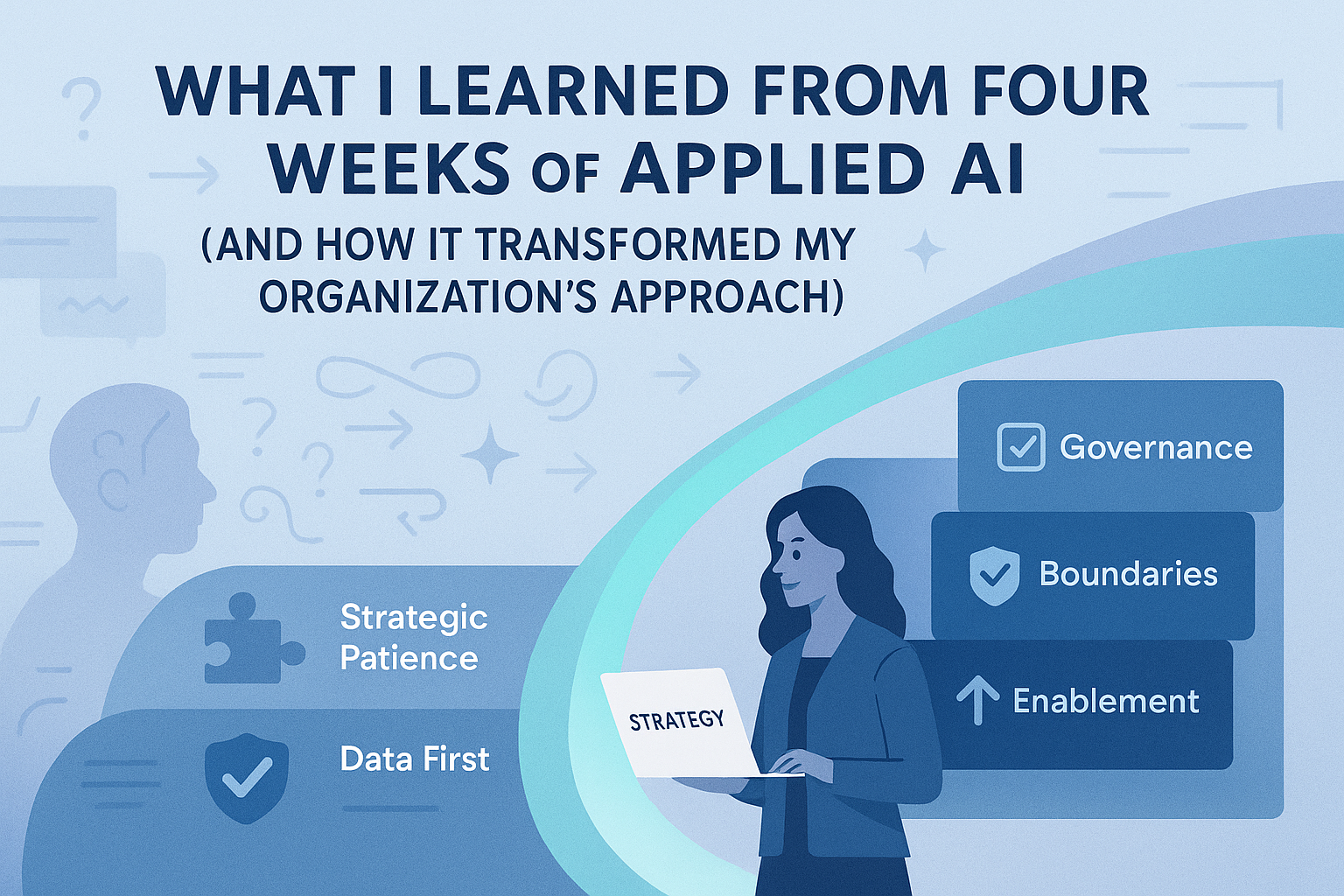
What I Learned from Four Weeks of Applied AI (And How It Transformed My Organization's Approach)
This is a guest post by Mia Velasco a participant in the XD131 Applied AI course. Mia is currently a global operations leader at Namati, a global nonprofit that empowers people to know, use, and shape the law.
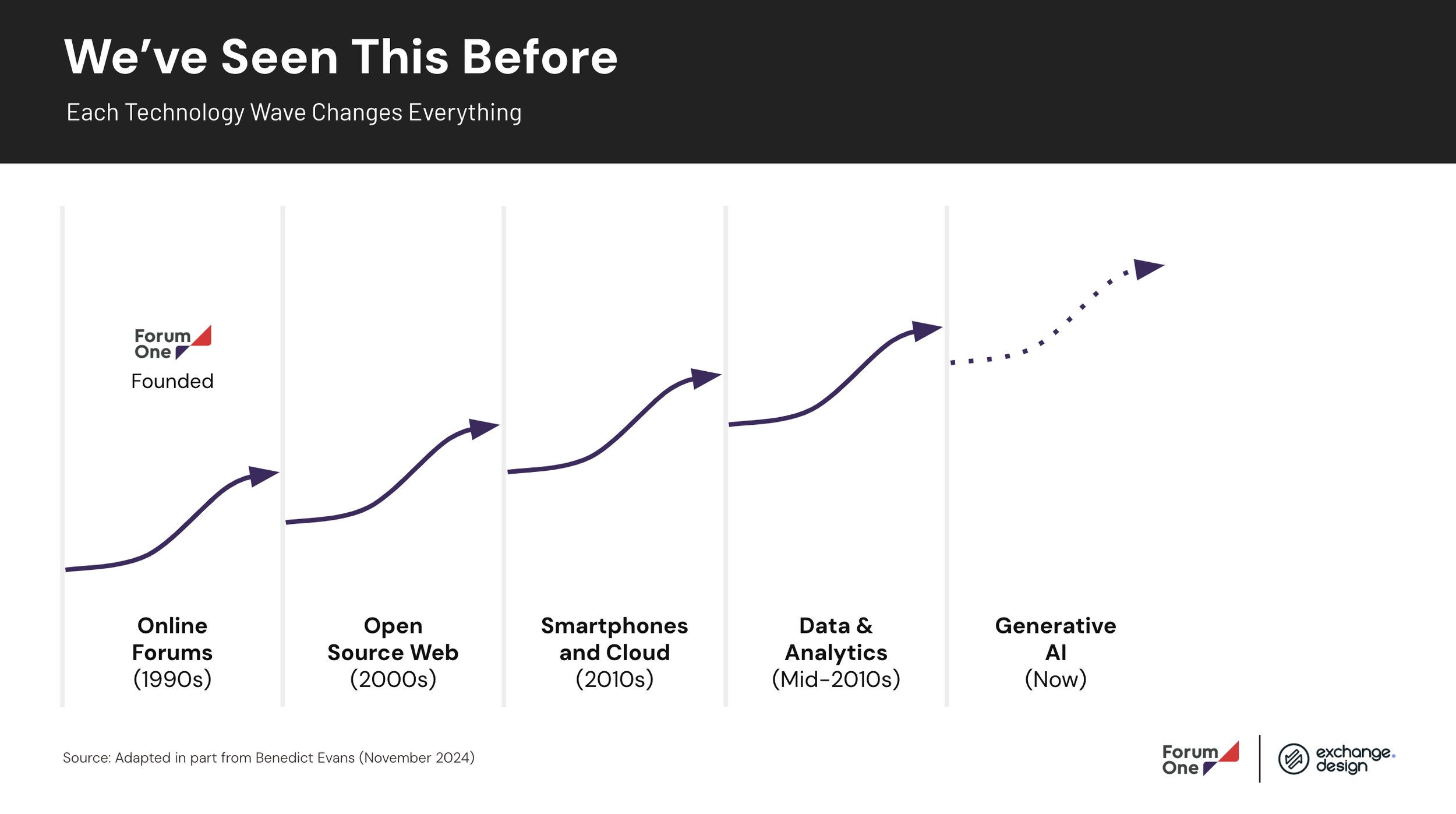
Pivoting to the AI Era: What’s Next for Digital Strategy?
Generative AI is no longer a futuristic concept; it's a present-day reality rapidly reshaping how organizations operate, engage, and deliver on their missions.
In a guest expert session in the June 2025 Applied AI (XD131) with our partners at Forum One, Elisabeth Bradley, CEO, and Brian Graves, the Vice President of Engineering, shared insights on the strategic adoption of AI for mission-driven entities.
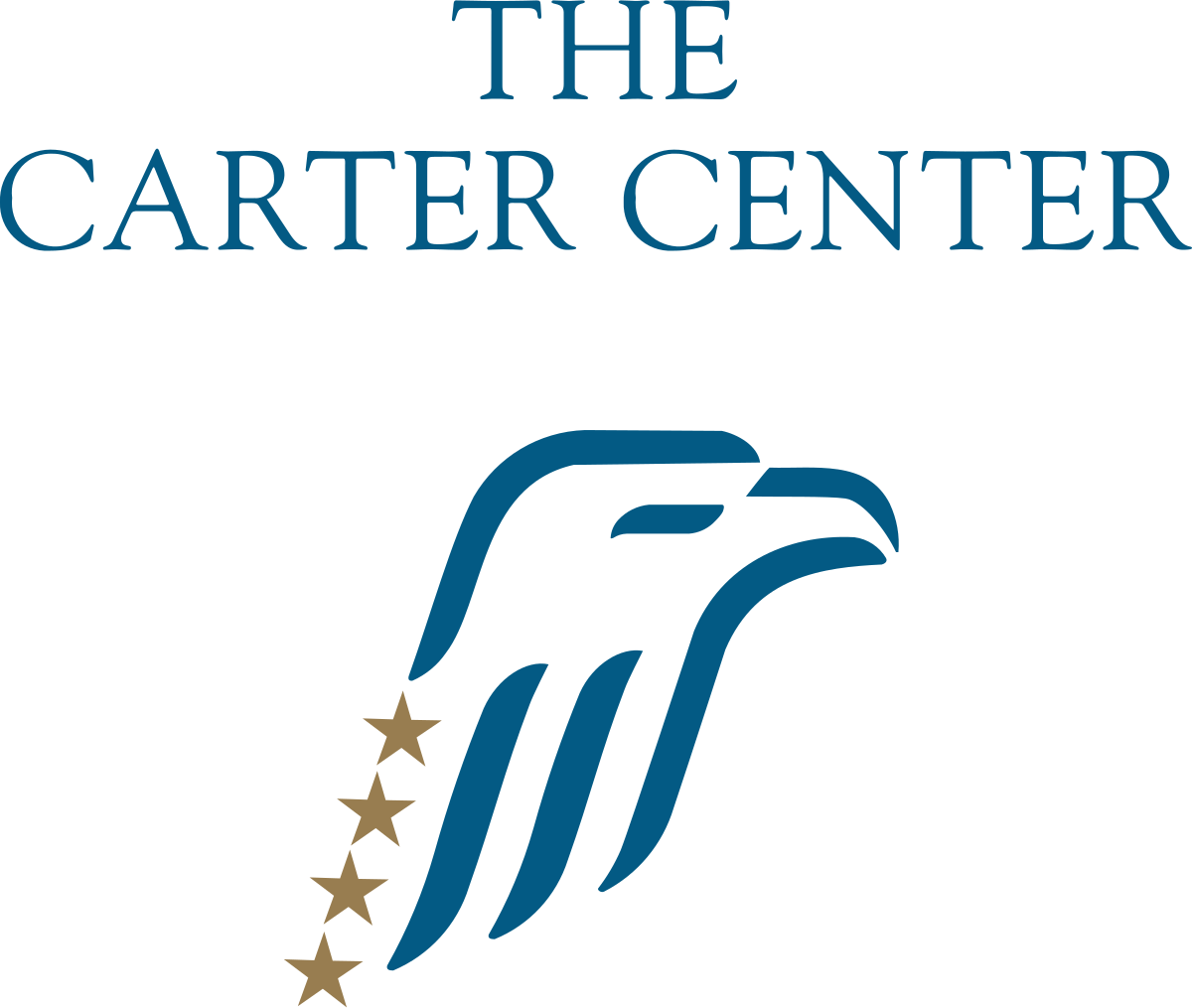
Navigating AI Prototyping: Lessons from the Carter Center's Human-Centered Approach
How can organizations that rely on trust begin to prototype and adopt AI solutions?
In our June 2025 XD131 Applied AI course, Michael Scholtens, Manager of Data Analytics for the Carter Center shared his experiences from a multi-year journey with AI. Successful AI prototyping and adoption in mission-driven organizations hinges on a thoughtful, human-centered approach that prioritizes trust, adapts to user needs, and carefully manages data sensitivity.
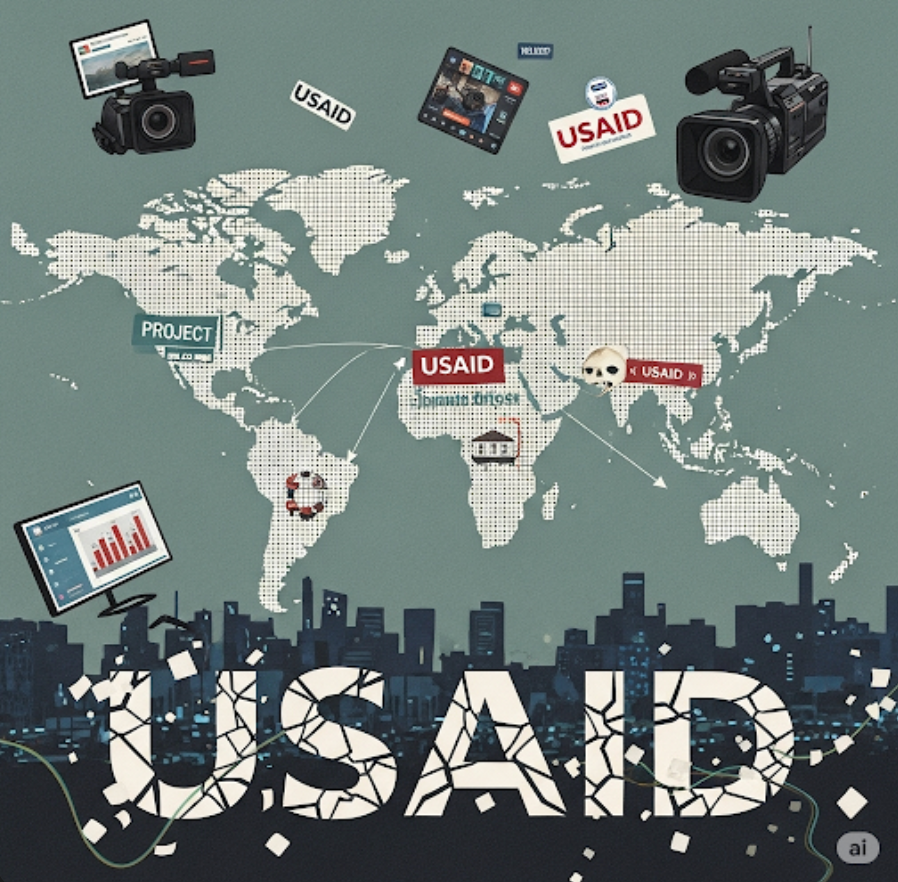
Using AI to Track Media Coverage of USAID’s Dismantling

How Building Markets is Leveraging AI for Small and Medium Enterprises
How can Small and Medium Enterprises (SMEs) derive real value from AI?
Elizabeth Brown, Executive Director of Building Markets, shared insights in the June 2025 Applied AI (XD131) course, including how nonprofit like Building Markets is thoughtfully integrating AI to scale its impactful work, while emphasizing that trust and verified data are the foundation for any successful AI solution — especially when connecting real businesses to real opportunities.
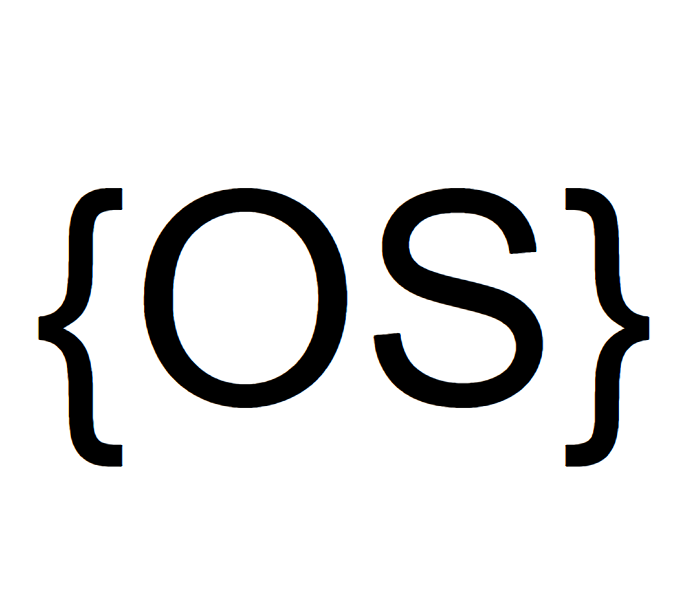
Rethinking Openness in the Age of Foundation Models
As the global AI community wrestles with the tension between scale and accessibility, recent work by researchers at Lelapa AI offers a compelling example of what inclusive, efficient AI can look like. Around the world, the push to shrink massive language models into deployable, localized tools has become a strategic priority, whether to reduce energy costs, mitigate cloud dependency, or bring AI to underserved populations. Yet, few efforts embody this shift as clearly as the recent transformation of InkubaLM.
New Syllabus! Applied AI (XD131)
We’re excited to share that Exchange Design has partnered with TechChange to create a facilitated online course for Applied AI (XD131), starting on June 2, 2025.
This course is designed as a guided entry point into the AI ecosystem for participants who are interested in applying these new technologies to their work. Participants will practice with no-code tools in hands-on workshops, explore timely curated readings, and discuss the implications with a wide range of AI experts and practitioners.

From Curiosity to Impact: The Surdna Foundation AI Journey
The world of philanthropy is increasingly leveraging the potential of Artificial Intelligence (AI) to improve efficiency and scale impact. Starting in 2023, Exchange Design (XD) and the Surdna Foundation partnered to better utilize AI for grantmaking and racial justice initiatives. The Surdna Foundation supports social justice reform, healthy environments, inclusive economies, and thriving cultures across the United States. The foundation dismantles the barriers that limit opportunity to create more prosperous, culturally enriching, and sustainable communities.

Showcasing AI's Global Impact Through a Geographic Lens
Exchange.Design partnered with the USAID Digital Frontiers Program and USAID to develop a StoryMap that showcases the transformative power of artificial intelligence (AI) in advancing global development initiatives. This collaboration focused on illustrating how AI technologies were being used responsibly to address a wide range of challenges, including environmental sustainability, economic empowerment, and social inclusion.
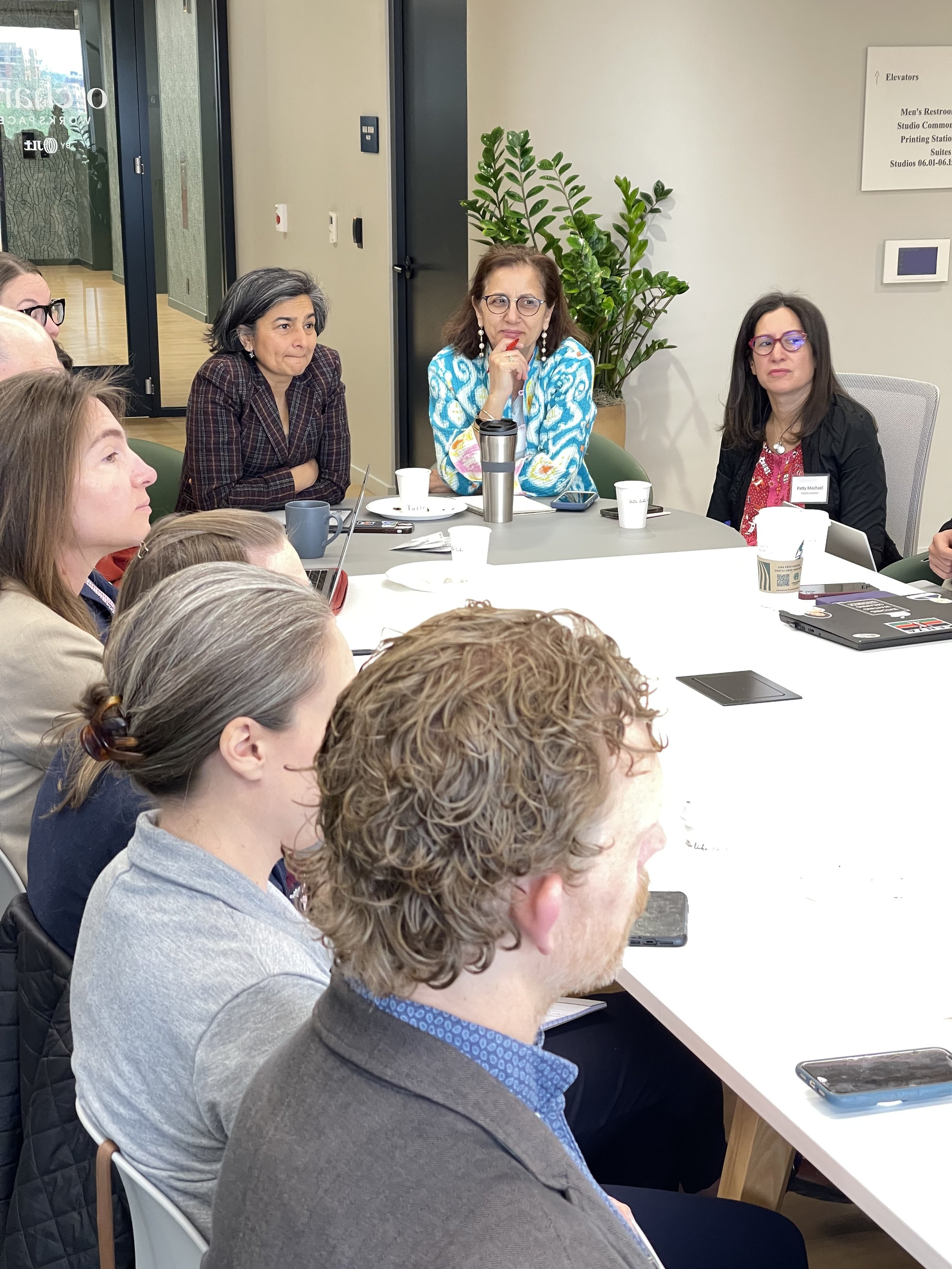
Exchange.Design Engages in AI & Data Policy Discussion at Technology Salon
This week, Exchange.Design participated in a Technology Salon event, hosted by Forum One, centered on Generative AI, data governance, and international development. The discussions explored the evolution of artificial intelligence technologies and their potential to tackle global development challenges effectively. Exchange.Design contributed insights on the advancements in AI and reflected on both the data security risks and the transformative case studies demonstrating AI’s impact on major global issues.

Transforming Data Interaction: Key Takeaways from Our Work with AI-Driven Context Augmentation
Over the past year, our team has dedicated efforts to developing tools that empower organizations to securely and transparently leverage large language models in combination with their own internal content. Reflecting on extensive development and collaboration with some of our partners, we've gained insights that have helped to shape our thinking on how context augmented AI solutions can best support organizations that aim to tackle some of the world’s most pressing challenges.

Partner Spotlight: Barri Shorey of Conrad N. Hilton Foundation
On February 5-6, 2024, the Exchange Design team facilitated a hybrid training on data governance and AI for decision making for the Conrad N. Hilton Foundation. We sat down with Barri Shorey, who coordinated the training for 20 staff at the Foundation headquarters in Westlake Village, California.

Team Spotlight: Ziad Achkar and the Digital Development Guidebook
Elizabeth Njoroge and Nora Lindström launching the Digital Development Guidebook at the ICT4D Conference in Accra, Ghana. Photo credit: CRS/ICT4D Conference.
